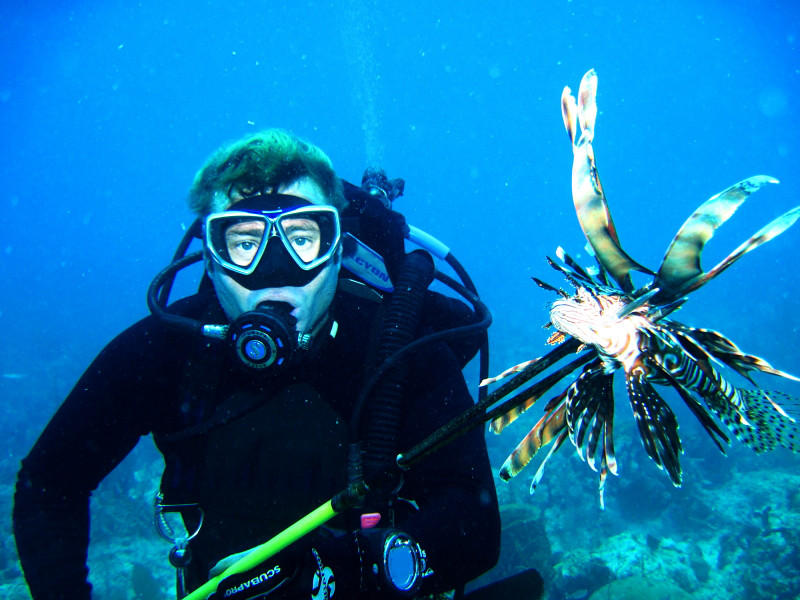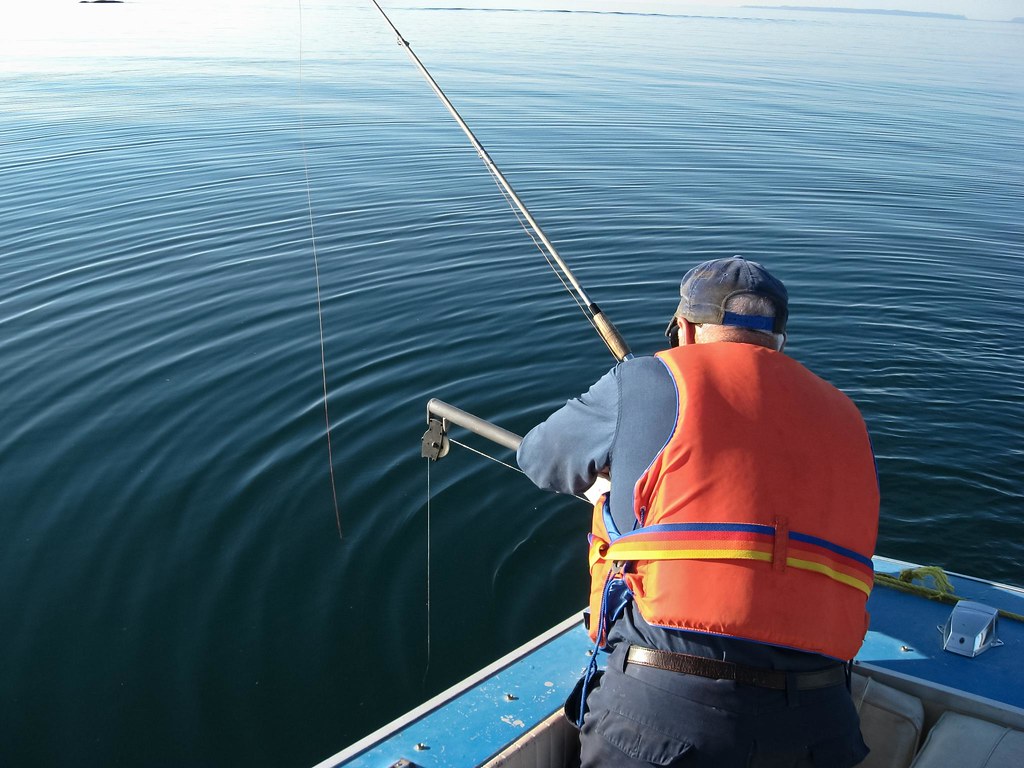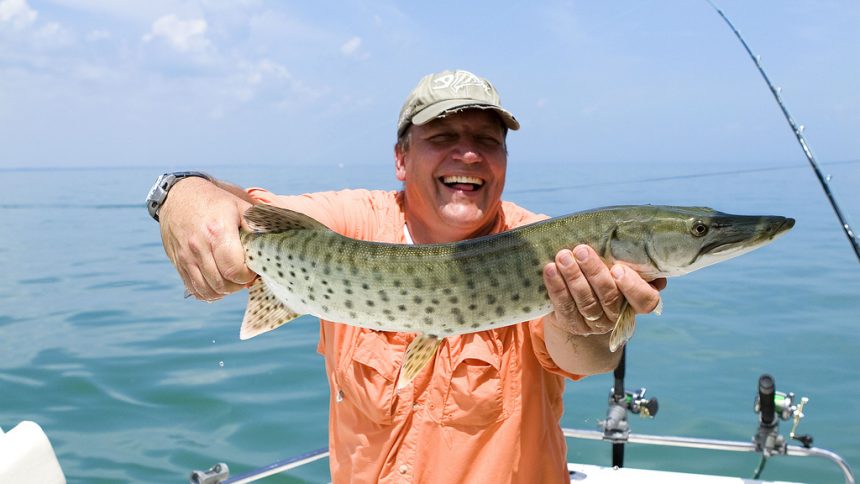Fishing is obviously about trying to catch fish. But for some people it’s more about the sport or competitive element, for others it’s about unwinding and they might even throw caught fish back into the water, while for others it’s not pass-time but a necessity to put food on the table. Our beginner’s guide to fishing will give you the background information on this ever-popular outdoor activity.
Photo By: Ryan Cosens
Different Types of Fishing

Photo By: Mark Fischer
We don’t know the exact date, but fishing dates back to as long as man has lived off the land in areas where there are rivers, lakes and the sea. Today, however, many people fish just to relax – not necessarily because it’s their main source of food – but it’s got to be said that fresh caught fish, that you’ve caught as a result of your own hard work has got to taste better than frozen fish you can buy in shops!
Spearfishing: Using a spear or a speargun is a very common fishing technique to this day. There are different versions of it. Sometimes standing in the water and spearing down, or spearing the fish while snorkelling, free diving or scuba diving.
Angling: This is probably the most famous type of fishing that falls under the umbrella of recreational fishing – the kind of fishing that people do to relax. It involves using a fishing line and rod. Angling can be done sitting on the banks of a river or lake, from a boat in the sea, lake or river, or even by angling while standing knee deep in water.
Hand gathering: Picking fish up by hand can be done – particularly in say Canada or Alaska (United States) during salmon fishing season where there is a huge abundance of salmon fishing along. However, hand gathering is more often used to grab things like shell fish, lobster, crabs and so forth.
Commercial fishing: There are plenty of types of fishing that fall into this category such as net fishing and trapping, plus using big boats to go out and catch fish like swordfish, shark, marlin, tuna and a whole range of fish and shellfish. This last version is usually called trawling. Commercial fishing is a necessary by-product of people wanting to eat fish without catching it by themselves. There are environmental issues, though, particularly with regard to overfishing and so-called ‘by-catch’ which is catching fish that you don’t need and then just discard. Fishing on a commercial fishing boat can also be very dangerous, with many deaths worldwide resulting from fishermen falling overboard, or being involve din onboard accidents.
Pest fishing: Another form of fishing is done to rid the water of introduced pest species. In some parts of the world, for example, lionfish (pictured below) is considered a pest and is threatening the existence of native specifies. Therefore, lionfish are allowed to be killed – and sometimes their catch is even encouraged with a reward.
Traditional fishing: This kind of fishing can use many of the fishing techniques mentioned (for example, net fishing, trapping, hand gathering, spear fishing, angling and so forth) but it doesn’t fall into the recreational or commercial fishing groups because it’s fishing that’s done to maintain local traditions around fishing and also as a form of sustenance. Traditional fishers are sometimes exempt from fishing laws that might govern recreational and commercial fishers because it’s part of their way of life and the fishing is done to catch food they will eat and not sell on to others.
Where to Go Fishing

Photo By: Florida Fish and Wildlife
Most countries in the world have places to fish – and there’s probably a fishing spot not too far from you! Rivers, streams, lakes and seas are all potential fishing locales. If you want to learn the basics you can always join a fishing tour or head to a fish farm, some of which are open to people wanting to try to catch fish from a small enclosed area. Visiting your local fishing supplies shop is also a good idea because the instore experts can tell you exactly what type of equipment you need for the type of fishing you want to do, plus they can give you a guide on what fish to catch and what the local rules are.
What to Fish

Photo By: Per
In most parts of the world what you can catch and in what quantity is strictly controlled. It’s necessary to check local regulations to see what fish you are allowed to catch, and what size the fish must be before you can keep it. Usually any fish that you’re not allowed to catch should be thrown back in the water.
What you try to fish largely depends on where you are and if you’re fishing for dinner, what you feel like eating. You should always ensure that you check local guidelines as sometimes you might need to buy a fishing permit, or even log the fish you’ve caught with a governing body.
Probably one of the most famous destinations for fishing are Canada and Alaska (United States) during salmon fishing season. Check out this article and this one for more information!
Other articles on travel destinations by the water and water sports adventure travel ideas:
Where to Scuba Dive with Big Animals
The Best Scuba Diving Specialities
How to Get Your Scuba Diving License
Where to Go Sea Kayaking this Summer
A Short History of Canoeing and Kayaking
A Short History of Deep Diving
Lovely Spots to Horse Ride on a Beach
The World’s Biggest Waterfalls
Most Adventurous Water Parks for Young and Old
Prime Wind Surfing Destinations
Beautiful and Giant Rivers to Cruise Down
In adventure travel news, n innovative new natural desert reserve spanning 10 percent of the total area of Dubai has been launched in the UAE. The Marmoon Desert Reserve Project is set to be the site of several ecotourism projects and conservation efforts contributing to the protection and nurturing of the environment,…
Hot Topics
In adventure travel news, n innovative new natural desert reserve spanning 10 percent of the total area of Dubai has been launched in the UAE. The Marmoon Desert Reserve Project is…














